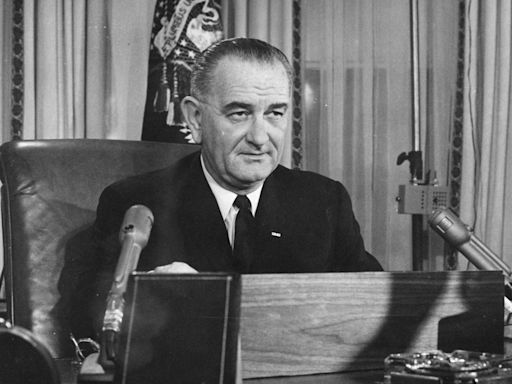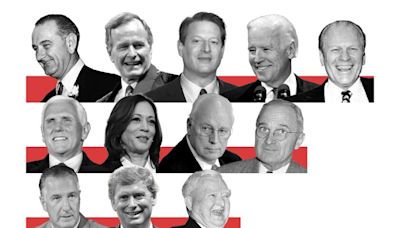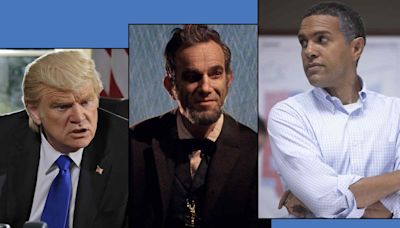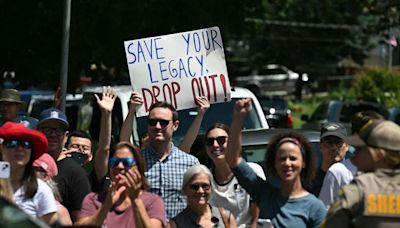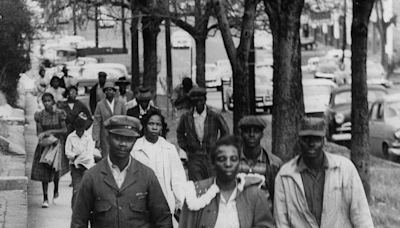Search results
Lyndon B. Johnson's tenure as the 36th president of the United States began on November 22, 1963, upon the assassination of president John F. Kennedy, and ended on January 20, 1969. He had been vice president for 1,036 days when he succeeded to the presidency.
Lyndon Baines Johnson ( / ˈlɪndən ˈbeɪnz /; August 27, 1908 – January 22, 1973), often referred to by his initials LBJ, was an American politician who served as the 36th president of the United States from 1963 to 1969.
Apr 2, 2014 · Lyndon Baines Johnson (often referred to as “LBJ”) was elected vice president of the United States in 1960 and was sworn in as the 36th president of the United States in 1963 after...
5 days ago · Lyndon B. Johnson was elected vice president of the United States alongside President John F. Kennedy in 1960 and acceded to the presidency upon Kennedy's assassination in 1963. He was president from 1963 to 1969.
- The Editors of Encyclopaedia Britannica
- Lyndon B. Johnson, frequently called LBJ, was an American politician and moderate Democrat who was president of the United States from 1963 to 1969...
- As president, Lyndon B. Johnson signed the Civil Rights Act, the most comprehensive civil rights legislation since Reconstruction, into law; he als...
- By 1968, Lyndon B. Johnson knew he was unlikely to win another presidential election; his increase of American involvement in the Vietnam War, as w...
- LBJ: The Early Years. Lyndon Baines Johnson was born on August 27, 1908, near the central Texas community of Johnson City, which was named for his relatives.
- Lady Bird Johnson. In 1931, Johnson moved to Washington, D.C., to serve as congressional secretary for newly elected U.S. Representative Richard Kleberg of Texas.
- Congressional Career. Johnson’s political career began in earnest in 1937, when he was elected to the U.S. House of Representatives as a Democrat. Quickly earning respect as a smart and hardworking legislator, he was re-elected five times.
- Johnson in the Senate. In 1948, Johnson was elected to the U.S. Senate following a bruising Democratic primary. After crisscrossing Texas by helicopter, Johnson managed to eke out a victory in the primary by just 87 votes.
In 1964, Johnson won the Presidency with 61 percent of the vote and had the widest popular margin in American history–more than 15,000,000 votes.
In 1964, Johnson won the presidency over Arizona senator Barry Goldwater by more than 15 million votes. In 1965, with a heavily Democratic Congress, Johnson enacted legislation augmenting federal aid to education and the creation of Medicare. He advocated for urban renewal and conservation efforts.
